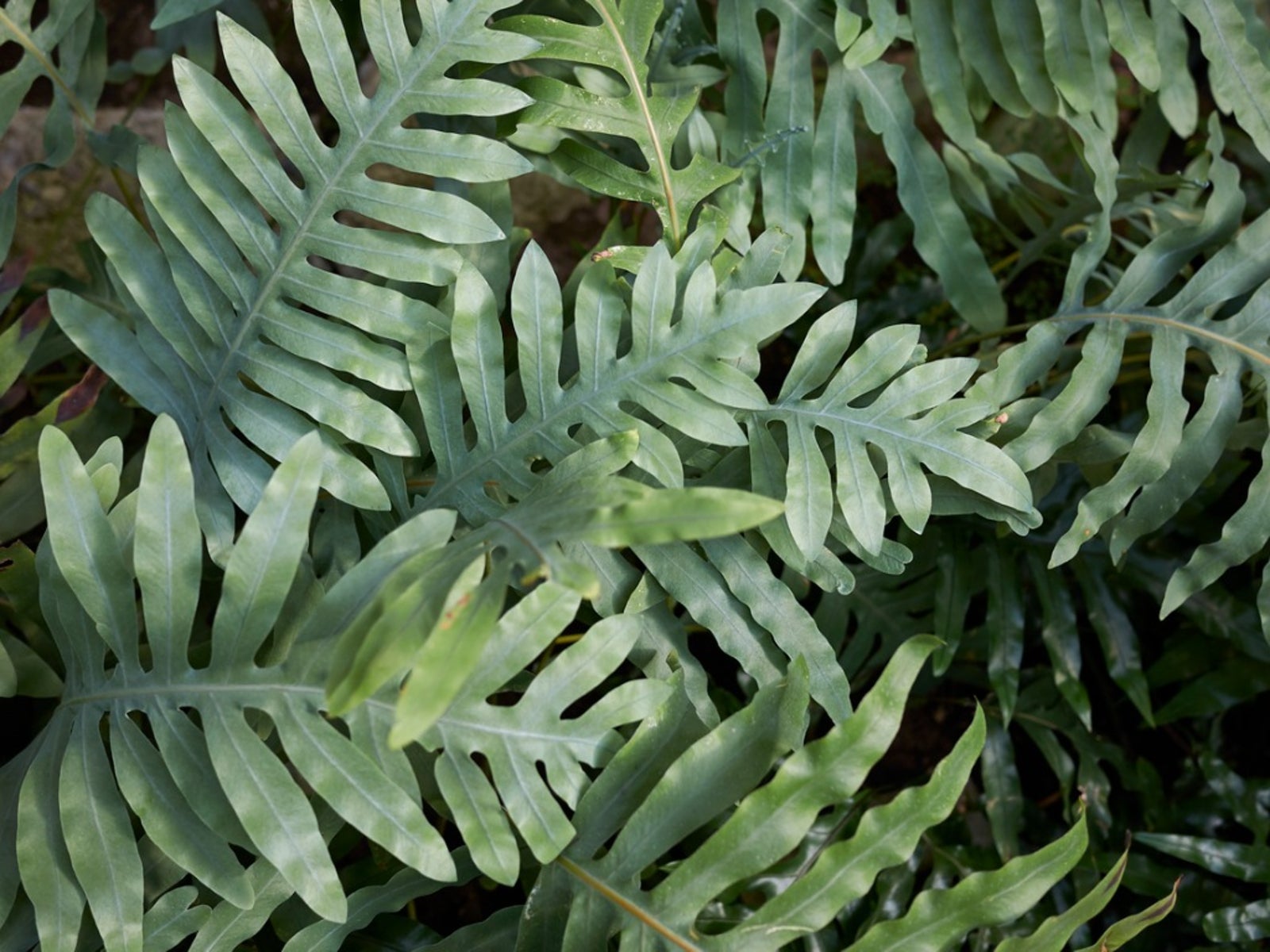Kangaroo Paw Fern Info: Tips For Growing Kangaroo Foot Ferns


Kangaroo paw ferns (Microsorum diversifolium) are native to Australia. The scientific name refers to the different leaf forms on the plant. Some leaves are entire, while mature leaves have deep indentations. Kangaroo fern care takes its cues from the native range of the plant, where it is a feature of the Canberra region, growing in sunny locations near rocky outcrops. Read on for more kangaroo paw fern info, including its cultural requirements and features.
What is Kangaroo Foot Fern?
Kangaroo paw ferns have a variety of leaf forms, but their length contributes to the common name. Kangaroos belong to the animal family Macropus, a reference to their big feet, and the fern that bears their name is characterized by up to 6 inch long (15 cm.) varietal leaves. Kangaroo paw fern info states the plant is an evergreen most suited to indoor growing, unless you live in a very warm region. Kangaroo fern is a very adaptable plant. It is equally at ease in the home or the office. The plant has semi-wiry stems that hold up long, herbaceous fronds. The fronds are not typical of those seen on common ferns and may have indentations on the edges or be smooth. Leaves are dark green and leathery, with a glossy shine.
Growing Kangaroo Foot Ferns
For anyone who wishes to divide this plant, kangaroo fern grows from hairy rhizomes. This means it can spread in larger spaces or you can divide it easily, when mature, to make more of the easy to grow fern. Try growing kangaroo foot ferns in indirect light. They are even tolerant of partial shade and in their native regions, are often seen growing up trees. Kangaroo ferns may be epiphytic, meaning they will grow in tree crotches, logs, and cracks in rocks. They need consistent humidity and moisture but should not be in boggy soil. As an outdoor plant, kangaroo fern is ideal in USDA zones 9 to 11. All other zones should treat this as an indoor specimen, but it can be brought outside in summer and situated in partial shade. The fern prefers acidic, well-draining soil that is consistently damp but not soaked. Add a bit of leaf mold or peat moss to enhance fertility and acidity. Plants should be kept in warm areas that are ideally 60 to 90 degrees F. (16-27 C.).
Kangaroo Foot Fern Care
Water kangaroo fern regularly. In winter, the plant is not actively growing and watering should be reduced to half. Rainwater or distilled water will improve plant performance. Fertilize once every three weeks with a good soluble plant food. Repot plants that have become overcrowded in early spring. An ideal mixture is half potting soil and half peat moss. Divide the rhizomes, after digging the plant up, by cutting them apart with a good, sharp, sterile knife. Each new plant needs several healthy fronds and rhizomes. As young plants establish, keep them in low light and give just enough water to keep lightly moist. Once new roots have formed and a couple of new fronds are visible, resume normal care.
Gardening tips, videos, info and more delivered right to your inbox!
Sign up for the Gardening Know How newsletter today and receive a free copy of our e-book "How to Grow Delicious Tomatoes".

Bonnie Grant is a professional landscaper with a Certification in Urban Gardening. She has been gardening and writing for 15 years. A former professional chef, she has a passion for edible landscaping.
-
 Looking For Plants To Give You The Soft And Fuzzies? Try These 5 Fuzzy Leaf Plant Options
Looking For Plants To Give You The Soft And Fuzzies? Try These 5 Fuzzy Leaf Plant OptionsLovers of texture, drama, silver foliage and tactile plants will adore these special sensory garden additions. These fuzzy leaf plant options will leave you all aglow
By Susan Albert
-
 Get Ready For A Summer Of Hummers! Grow These Full Sun Hummingbird Plants and Flowers
Get Ready For A Summer Of Hummers! Grow These Full Sun Hummingbird Plants and FlowersIf you’re lucky enough to enjoy a sunny backyard, make sure you are maxing out on your pollinator opportunities and grow these full sun hummingbird plants and flowers
By Tonya Barnett